You can leave the shipping bolts in, but a little loose to act as guides or you can just leave them out. The weight of the cat frame is enough to seal against the gasket, and I don't think you want the bolts tight since the frame will expand and contract to some degree. Like I said though, save the bolts.
So, the stove will be sitting on the floor in front of the hearth? If so, the controls will be easy to get to, and you won't lose radiant heat into the fireplace. I see in the "installation" section of the manual that the want .59 R-value under the stove.
My stove sits on the hearth, with the back just an inch or two in front of the plane of the fireplace opening. I could use some insulation on the fireplace walls to keep from losing radiant heat to the outdoors through my external masonry chimney.
I have the cat probe installed....doesn't give a true cat temp since it is 8" long and the heat dissipates before it gets to the dial end, but it is still useful to monitor temps near the flue exit. In addition, I have a stove-top meter, just in front of the top-vent cover plate and stone, and then a magnetic surface meter lying on the stainless tee snout, almost to where it goes vertical. I find that the cat probe and the tee meter pretty much run in tandem, and I use those to tell me when to light off...not the stove-top temp as much. I will run the cat probe up to about 900-1000 and the tee snout meter will be at about 500-600. Then I adjust the air to level those temps off. After about 10 minutes of running at that level, I can close the bypass and get a reliable cat light-off, even though the stove-top meter may only be at 150-170, well below the 250 recommended in the manual. The cat probe face is hard to see unless I use a mirror so I have a bent paper clip marking 1000*, and I can see that and the needle looking down from the top (the meter face can turn in the hole, and the paper clip gives you a definitive reference mark.) You will have to experiment to see where you have to level the meters off to get reliable light-off, with your particular setup. Last pic here is from the Fireview, so the probe is on the other side of the flue exit than the Ks. The Fv sat even further back, flush with the fireplace opening, since it didn't have the 7-6" adapter.
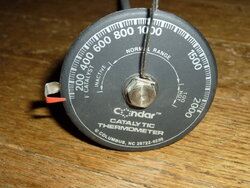
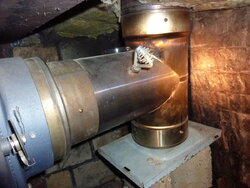
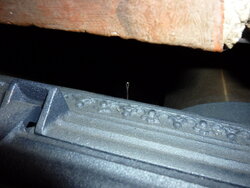
I would cut the bottom inch or so off the legs so that it clears the opening.
Yeah.... I thought about that, but I need to put something fireproof in front of the hearth anyway to get the needed clearances,
I guess this stove was in a different house, or a different location in this house, if you had to move it?
Try the old cat. If the bypass mechanism was rusted in place, the operator may not have been using it. We take for granted that everyone knows how to run a woodstove. Many people just think you put stuff in and burn it.
Yeah, some people don't see the point of reading manuals.


You have to wonder when you see a smoke stain like that above the load door. The Fireview (and I assume the Ks, since I ran both on my 16') will draft well on the 13.5' liner at my BIL's, so I'd say chances are good that they were opening the door with the bypass closed.

But I guess there may have been some other draft issue...
I also wonder how the door got scratched like that?? BTW, check the ash pan door gasket...a leak there could over-fire the stove in a hurry.


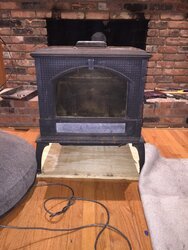
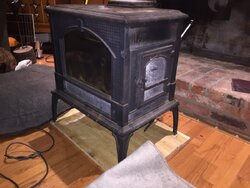
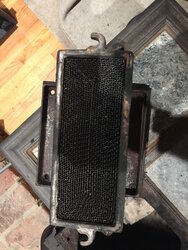
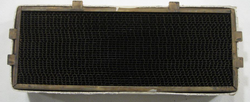
 but then that is nothing new.
but then that is nothing new.




 You have to wonder when you see a smoke stain like that above the load door. The Fireview (and I assume the Ks, since I ran both on my 16') will draft well on the 13.5' liner at my BIL's, so I'd say chances are good that they were opening the door with the bypass closed.
You have to wonder when you see a smoke stain like that above the load door. The Fireview (and I assume the Ks, since I ran both on my 16') will draft well on the 13.5' liner at my BIL's, so I'd say chances are good that they were opening the door with the bypass closed.  But I guess there may have been some other draft issue...
But I guess there may have been some other draft issue...